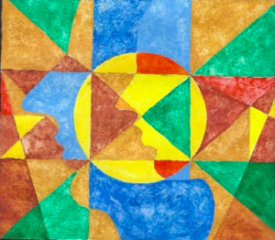Volume 6 Issue 2 February 2016
The prevalence of alcohol use in India is found to be around 40%, with hazardous use being present in about 15% of the population and dependence pattern being present in about 2% of the population. The increasing sale indices of alcohol across many states emphasizes the need for better knowledge among medical personnel about the management of alcohol dependence and its medical and psychological complications. Following are steps to manage case with alcohol dependence:
Step-1: Assessment of alcohol problem
CAGE questionnaire with the following 4 questions is used as a basic screening instrument to assess alcohol problem. Items are scored as 0 and 1 based on their no and yes replies. Score of 2 or more is significant emphasizing treatment.
- Have you ever felt you should Cut down on your drinking?
- Have people Annoyed you by criticizing your drinking?
- Have you ever felt bad or Guilty about your drinking?
- Have you ever had a drink first thing in the morning to steady your nerves or to get rid of a hangover (Eye opener)?
Step-2: Do the investigations
Complete physical examination to be done. Assess for alcohol related complications and withdrawal symptoms. Complete hemogram, liver function test, lipid profile, ECG, ultrasound abdomen are basic investigations to be done. Other specific investigations as needed can be conducted.
Step-3: Detoxification
It is the process of getting rid of the harmful substances from the body in a controlled and safe manner with benzodiazepines to reduce the withdrawal symptoms like tremors, anxiety, and insomnia and also to reduce the probability of withdrawal seizures and delirium tremens. Long acting benzodiazepines like diazepam and chlordiazepoxide are preferred as they minimize the need for frequent dosing, and effectively control withdrawal symptoms for a longer time. In cases of liver failure, lorazepam, oxazepam, and temazepam are preferred as they are short acting and not metabolized by the liver. The dosage is started high and tapered by 10% per day and stopped by 10 days. Patient may require sedation with injectable antipsychotics in case of agitation due to delirium. Thiamine supplementation orally or parenterally is given in doses of 100-200mg/ day to restore the body’s store and to avoid Wernicke’s encephalopathy and Korsakoff’s psychosis. Withdrawal seizures are treated with benzodiazepines, without any anticonvulsants.
Step-4: Long term management
Pharmacotherapy
- Deterrent agent- Disulfiram – Caution of developing a disulfiram ethanol reaction while taking alcohol
- Anti craving agents- Acamprosate, Baclofen, Naltrexone, Topiramate. Acamprosate and baclofen are not metabolized by the liver and can be given safely in patients with liver dysfunction. Naltrexone is better avoided in patients with liver dysfunction.
Psychotherapy
Motivation enhancement training and relapse prevention counselling are given to maintain abstinence and reduce the chances of relapse.
Step-5: Reaching out to the family members
Spouse counselling is very essential to deal with the family and social issues due to alcoholism. Family therapy and marital therapy are likely to be effective by affording indirect support to the patient. To conclude, alcohol dependence is a complex disorder with multifactorial etiology. Because of this complexity, relapses are quite common and the management has to be planned accordingly anticipating these problems.

Department of Psychiatry Sree Balaji Medical College and Hospital, Chromepet, Chennai
Email: anuritadr@gmail.com

